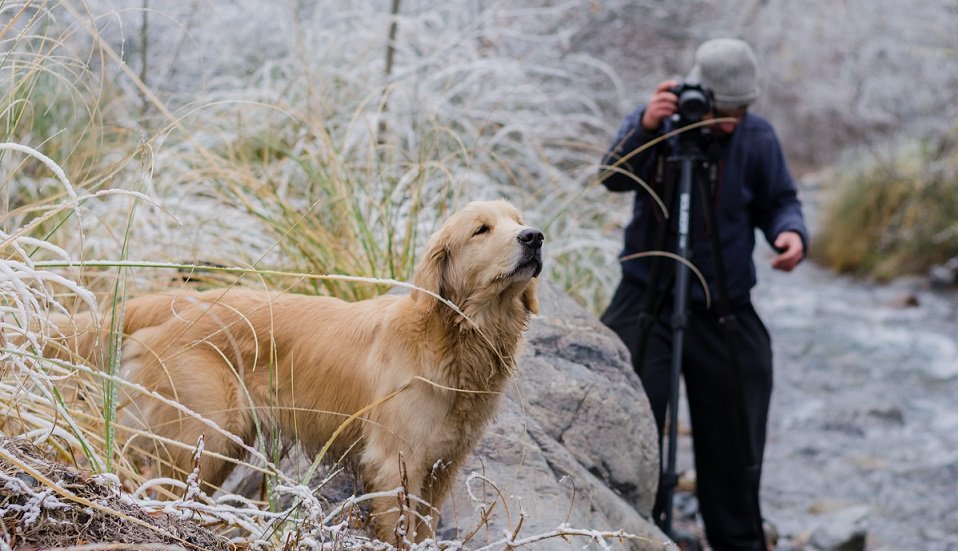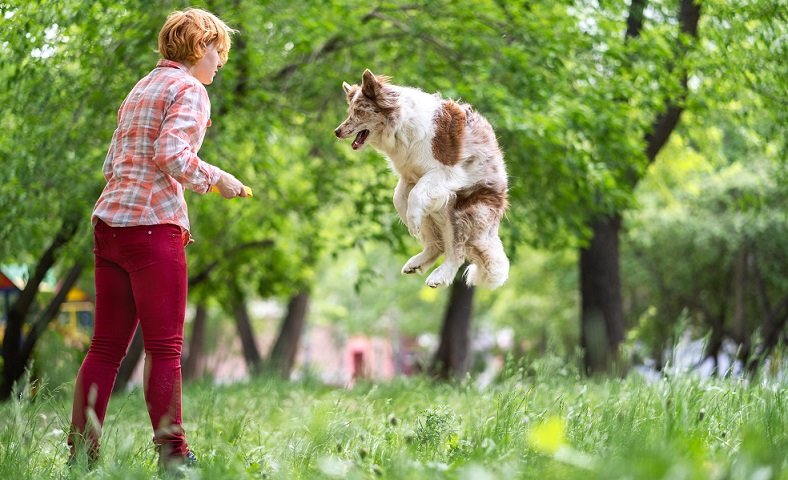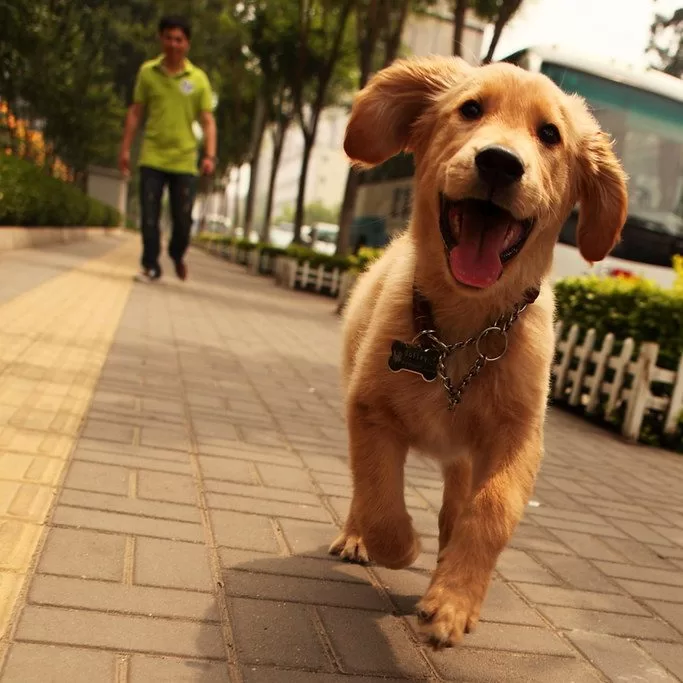I was sitting in the patio minding my own business when suddenly a whirl of wind got my Golden spinning wildly. At least, that’s what I thought. But I was wrong.
What makes dogs run in circles?
If you find your dog creating tornadoes or running around the yard for no apparent reason, let me start by saying that it’s normal. Dogs experience this sudden burst of energy that leads them to run frantically around the house or take laps around the furniture as if they were stung by a bee or spooked by a smaller animal.
Frankly, it got me scared at first. So I quickly got hold of a local vet over the phone and explained my dog’s peculiar behavior. According to him, my dog had a Frenetic Random Activity Period, also known as zoomies, which is a common phenomenon among healthy dogs.
After I was assured that my dog was safe and sound, I jumped on the Internet and started reading about it on forums.

And here’s what I learned.
Frenetic random activity periods are common in dogs. Although little is known about these random bursts of energy in dogs, dog owners are encourages to let the dogs engage in the behavior as long as they are in a safe environment. Wikipedia has good information on this phenomena https://en.wikipedia.org/wiki/Frenetic_random_activity_periods
Dogs are like kids. They love to run and create menace, even when they don’t want to. It’s an involuntary response as a result of an energy outburst after a long lazy day or having rested all night.
Zoomies happen when the dog has accumulated excess energy over time due to extended inactivity or being restrained in a crate. In my dog’s case, it was due to skipping his morning walks and having fewer opportunities to release energy, which has become normal in this pandemic situation.
Is it common in all dog breeds?
Even the laziest dog breeds engage in zoomies on occasions. And chances are you’d be startled for the first few seconds. Here’s a video compilation that shows that pretty much every dog breed on the planet likes to blow off steam in its own unique way.
Could my dog get hurt?
Considering their uncontrollable expression of physical energy, your dog is likely to hurt himself or anything/anyone that comes his way. While dogs of any age can experience zoomies, it is more common in younger dogs as they hit puberty. If your dog is 2 years or younger, you should be mindful of his physical activity and provide him with enough opportunities to exhaust himself.
How to figure out if your dog is about to FRAP?
There could be a number of triggers or just one. You never know. But if you pay attention, you can easily chalk it up to the immediate cause. Does your dog spend too much time in the crate? Does he eat more than he should? Sometimes, all it takes is a cold bath.
However, according to experts, anxiety is another trigger for your dog’s zoomies. This is characterized by a strange behavior called ‘tail-chasing’, wherein your dog starts chasing his own tail until it drops. Sometimes, dogs become so engrossed in zoomies that they enjoy it more than eating. BTW, dogs really love to eat.

Does eating habits lead to zoomies?
When it comes to feeding your dog, don’t let your emotions take over. I’m saying this because it’s too difficult to ignore that cute puppy face asking for food. Even if you have fed them a minute ago, they will almost always want to eat what you are eating. Feeding too much either makes them lazy or gives them more energy than they can handle; hence, zoomies.
Should you do something about it?
FRAPing is a natural dog behavior. So don’t try to find a cure. However, you must ensure a safe environment for your dog when they are letting it out of their system so that nobody gets hurt, especially young children around them or your furry friend himself.
As soon as you notice zoomies coming on, let your dog out in a fenced yard. And to keep him from participating excessively in zoomies, you can provide playful distractions by jumping into the frenzy or lure your dog out of it by offering treats.
What else can you do to minimise the occurrence of FRAPs?
Your furry friend is going to have an occasional burst of energy. So structure his day in a way that involves a lot of physical and mental exercises. Play fetch game or take him out for a walk and let him find his own expressions of energy.
Minimise Lazy Hours
Reduce the amount of time your dog spends in the crate. Let him walk around the house, chase birds, spoil your couch and pull on the leash. These are some of the healthy ways to channelize your dog’s energy.
Calculated Feed
Most dog-parents make the mistake of overfeeding their dogs – either out of affection or ignorance. And as it turns out, affection is as dangerous as ignorance. Spread your dog’s food intake evenly throughout the day. Feed him in small quantities at small intervals. That should keep his energy levels under control and enough to get him through the day with normal physical activity.
Get your dog a sibling
I’m no expert but I feel that lack of company may also lead to your dog feeling anxious or lazy. Imagine not having a friend to talk to or play golf with. Anyone would go crazy.
When your dog has company, he might be less likely to show compulsive behavior. Or at least it won’t look odd when both your dogs are doing it.
Don’t use punishment to discipline your dog
At least when he is showing compulsive behaviors. There are high chances that your already anxious dog may get more anxious and feel a greater urge to engage in zoomies. Rather helping him out, you will end up making things worse for him.
Speak to your veterinarian or an animal behavior specialist if you feel your dog’s zoomies are not normal or occur more frequently than usual. Sometimes it’s difficult to break innate habits; therefore, seeking expert help is the best and safest way forward.
As I am trying to finish this article, my dog’s desperately waiting for me for a game of fetch. I gotta go before he starts running in circles and freak me out again.
If you wish to learn more about caring for dogs please visit some of our other popular articles here: https://geozoo.org/dog-care-dog-training-collar-product-review/

